Naomi Devil
In her art, Naomi Devil addresses gender-specific inequalities in terms of pay and opportunities, focusing specifically on the market value of female artists.
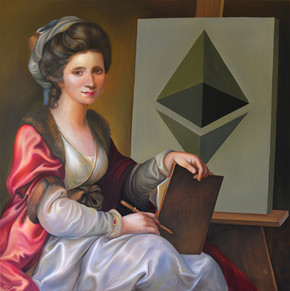
This series of paintings references classical portraits to examine one of the greatest inequalities in the contemporary art market: the gender pay gap, particularly the market value of works created by female artists. Each individual painting recalls a historical female painter who, back in her own day and age, had to contend with male-dominated institutions and, in many cases, only gained visibility thanks to her individual courage and perseverance.
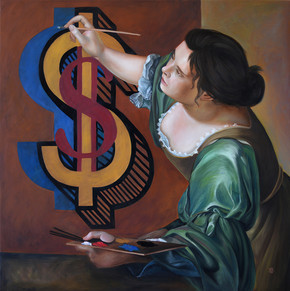
Now, centuries later, they are picking up their brushes again – but this time they are not painting portraits but currency symbols: ¥, €, $. These currency symbols make ironic references to the world of art sales and marketing. The canvases no longer show the faces of aristocrats or muses, but instead they display the cold symbols of the business world that put a price tag on works of art and thereby define their “worth.” The series combines the aesthetics of classical academic painting with contemporary imagery, deliberately creating tension between the past and the present, between idealized beauty and capitalist reality.
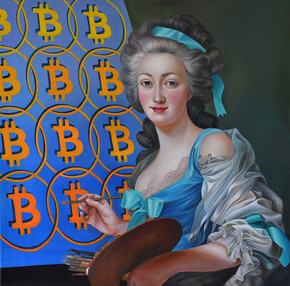
The works pay homage to the creative and intellectual legacy these women have left behind, but they also represent a critique of the covert (but impactful) gender-specific distortions in today’s art market. It is a fact that works by female artists still tend to sell for significantly less in art auctions than the works of their male counterparts – regardless of artistic value or impact.
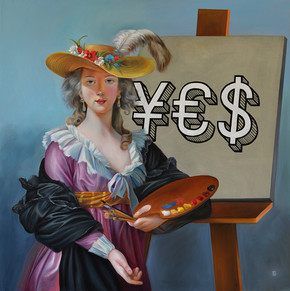
This series takes a subtle but unwavering stand for visibility. In one of the paintings, this message can even be read literally: The currency symbols form the word “YES,” adding yet another ironic layer to the picture. This “yes” can be read as a statement of yielding to the power of money with an affirmative response, but it can also be understood as the painter herself demanding her place and recognition in the market: “Yes, we’re here too.”
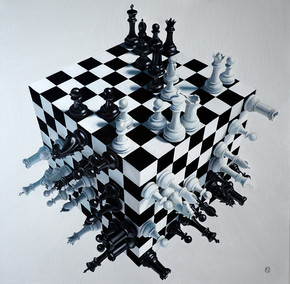
This painting adds another powerful metaphor to the series: The surfaces of the cube are chess boards with famous endgame positions of Judit Polgár, the foremost female chess master of the modern era. Polgár repeatedly broke boundaries in a male-dominated discipline, defeating some of the greatest players ever – Anand, Shirov, and Karpov. The checkmate positions depicted on the cube are not only historical reminders of these victories, but they also symbolize the disruption of rigid structures.
The cube itself becomes a symbol of a system governed by fixed rules and hierarchies – like the institutions that dominate the art market. But Polgár’s victories show that unexpected twists are possible even within such rigid systems. The queen, the strongest piece in the game, is a metaphor for the creative and intellectual power of women who manage to gain visibility and prominence in the face of resistance.
Like the ironic currency symbols in Naomi Devil’s other works, this painting also highlights the tension between playful and serious perspectives, between rules and freedom. It pays tribute to the perseverance and strategic thinking of the women who have challenged – and changed – not only playing fields but entire social systems.
About the artist
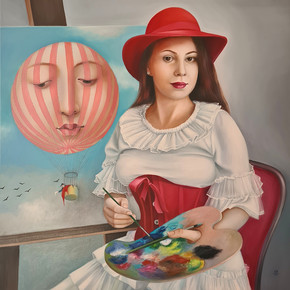
Naomi Devil lives and works in Vienna and Budapest. She studied at the Academy of Fine Arts Vienna, the University of Applied Arts Vienna, and TU Wien.
She is a member of Künstlerhaus Wien and the MAOE (Magyar Alkotóművészek Országos Egyesülete, the National Association of Hungarian Artists).
Naomi Devil has received several awards for her work.
![[Translate to English:] Zwei Kunstwerke von Naomi Devil](/fileadmin/wu/_processed_/f/2/csm_Header_Ausstellung_960x310_9c9cf185ce.jpg)